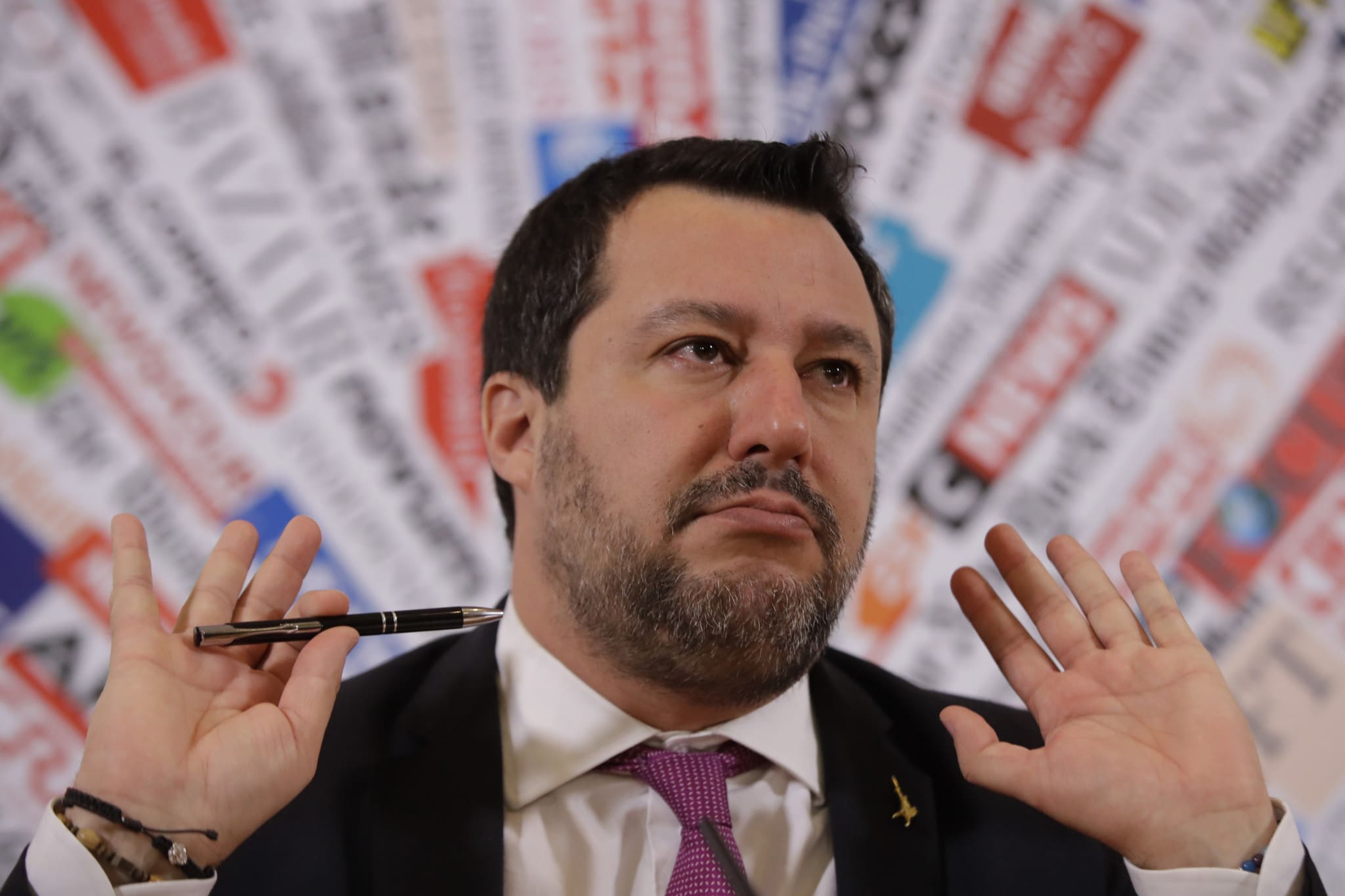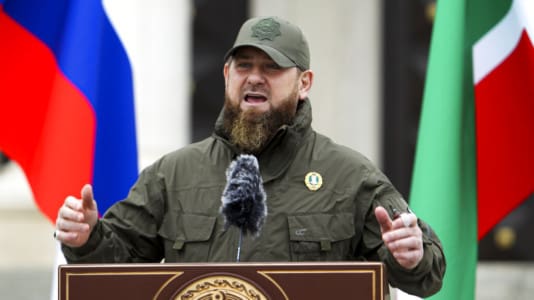What happened to Matteo Salvini and his party, the League? At the height of his form in 2019, Salvini was deputy prime minister and interior minister in Giuseppe Conte’s first government. His party won the elections to the European Parliament that year, doubling its result obtained in the previous year’s parliamentary elections.
Salvini was successfully implementing his closed-port policy as part of a general clamp-down on illegal immigration, resulting in a very large decrease in the number of arrivals by sea of new illegal immigrants and also a significant decrease in the number of drownings in the Mediterranean. He had become, together with Hungary’s Viktor Orbán, the face of resistance to mass immigration that Brussels, Berlin, and Paris wished to impose on all Europeans.
Today, Salvini’s League is part of a government dominated by left-wing parties — the Democratic Party (PD) and the 5-Star Movement (M5S) — and led by a Eurocrat, Mario Draghi.
[pp id=36546]
It is a government that has distinguished itself with some of Europe’s most vicious attacks on civil liberties in the wake of the Covid pandemic and has just announced a decree that will allow 70,000 additional non-EU immigrant workers to come and live in Italy.
This move comes despite the fact that unemployment is over 8 percent of the working population and illegal immigration has risen sharply due to the Draghi government’s continuation of the policy of reopened ports inaugurated by the second Conte government, which was supported by an all-left coalition (with the M5S, the PD, and some small left-wing parties). The consequences are all too visible.
In the period from January to April, there were 9,467 arrivals of illegal immigrants by sea in 2018 (under the last PD government), 779 in 2019 (under the first M5S-Ligue government, with Salvini as interior minister), 3,465 in 2020 (under the M5S-PD government), 9,013 in 2021 (under the M5S-PD government until February, then under the Draghi government formed by the M5S-PD-Forza Italia-Ligue coalition from February), and finally 10,761 this year (still under the same Draghi government in which the League participates).
[pp id=27984]
As for the total numbers from January to December, there were 23,037 arrivals in 2018 (with Salvini as interior minister from June 1), 11,471 in 2019 (of which only 5,089 came from Jan. 1 to Aug. 31 when Salvini was still interior minister), 34,154 in 2020, and 59,702 in 2021.
As if the participation of Salvini’s League in a government that is lax on illegal immigration was not enough, now it is a secretary of state of the League, Nicola Molteni, who has become the government’s spokesperson for the new draft decree meant to authorize the arrival of 70,000 additional non-EU immigrants “to respond quickly to the demands that are coming in from businesses.”
This decree will be in addition to the one adopted last year, which had already authorized the arrival of 70,000 non-EU immigrants. And we no longer hear Molteni or Salvini complaining about the laxity of the very pro-immigration Interior Minister Luciana Lamorghese, as they did last summer and a few times before.
Why the shift on immigration? The reason is that above all, the League is a party of northern entrepreneurs, and this core electorate of Salvini’s party is pushing to bring in immigrants as they are having trouble finding workers. It is the same core electorate that motivated Salvini to join the Draghi government, just like Silvio Berlusconi’s center-right Forza Italia (FI) party, but unlike the third partner in Italy’s right-wing block: Giorgia Meloni’s national-conservative Fratelli d’Italia (FdI) party.
The pressure is passed on through the northern regions governed by the League, explains an article in Milano Finanza titled “Now Salvini is pro-immigrant.”
For Luca Zaia, governor of Veneto, who is a top member of Salvini’s League: “It is necessary to revise the national flow decree [allowing for an incoming flow of legal migrants] to encourage the hiring of refugees seeking work.”
[pp id=24157]
Salvini himself explained in a recent interview for L’Avvenire: “I will ask Draghi to overcome bureaucracy. Let’s give the mayors a free hand. There are too many levels to climb, the Prefecture, the Civil Defense, the ASL. One shouldn’t waste even an hour making documents when we need people to work.”
Tourism Minister Massimo Garavaglia, also from the League, also believes that Italy needs to bring in more non-European immigrant workers to meet the needs of the tourism sector.
By contrast, the Brothers of Italy thinks that by bringing in workers from non-EU countries, “the government risks promoting competition downward between workers.”
Indeed, until now, legal economic immigration involved about 30,000 new immigrants per year in Italy. With the Draghi government, this number has more than doubled, and such a sharp increase comes in addition to the increase in illegal immigration.
It should therefore be no surprise that support for Salvini’s League among voters is back to its 2015 level, at 16 percent in opinion polls, while it was at 30-35 percent back in 2019, at the end of Salvini’s tenure as interior minister. In the May 2019, elections to the European Parliament, the League came first with 34 percent of the popular vote.
But for many months now, the party that tops the polls among the right-wing block is Giorgia Meloni’s Brothers of Italy (Fratelli d’Italia, FdI), a party that is more conservative and anti-immigration than the moderately liberal-conservative League and its fast-shifting leader.
More generally, the League’s slump in the polls is clearly the consequence of Salvini’s support for Mario Draghi’s grand coalition government, which has been dominated by the agenda of the left, and of Salvini’s own evolution towards positions that are typical for the European politically correct center-right.
And since the same causes produce the same effects, right-wing voters are now turning their back on Salvini and the League as they had been doing in other European countries in relation to increasingly liberal-progressive, pro-immigration center-right parties, whether it be the German CDU, the French Republicans (the party of President Chirac and President Sarkozy, whose presidential candidate did not even reach the 5-percent threshold in the first round of this year’s presidential election) or Spain’s once-mighty People’s Party which can no longer govern even at the regional level without the support of the truly conservative Vox party.
For some time now, Salvini has been nurturing the idea of merging his party and that of Silvio Berlusconi, which is at only 8 percent in the polls, in a broader center-right structure. He would have liked the larger structure he has been dreaming of to encompass Giorgia Meloni’s party as well, which has remained in opposition to the Draghi government (even though it is still part of coalitions with the League and Berlusconi’s Forza Italia at the regional and local level). However, Meloni does not desire a single party of the right that would adhere to the ideas of the left, and this is the reason why the Brothers of Italy, which only scored 6.5 percent of the vote in the 2019 European elections, are now at 22 percent of voting intentions in the polls, in first position just ahead of the left-wing Democratic Party and far ahead of the League.
For Meloni, it is important not to renounce right-wing values: “I will never believe the narrative that in Italy to be presentable you have to go arm in arm with the left or govern with the left. The sine qua non for governing well is to stay in one’s own half of the field.” And as in France and Spain, it is the right that does reject being right-wing that is rising while the center-right collapses as it embraces the left’s agenda.





